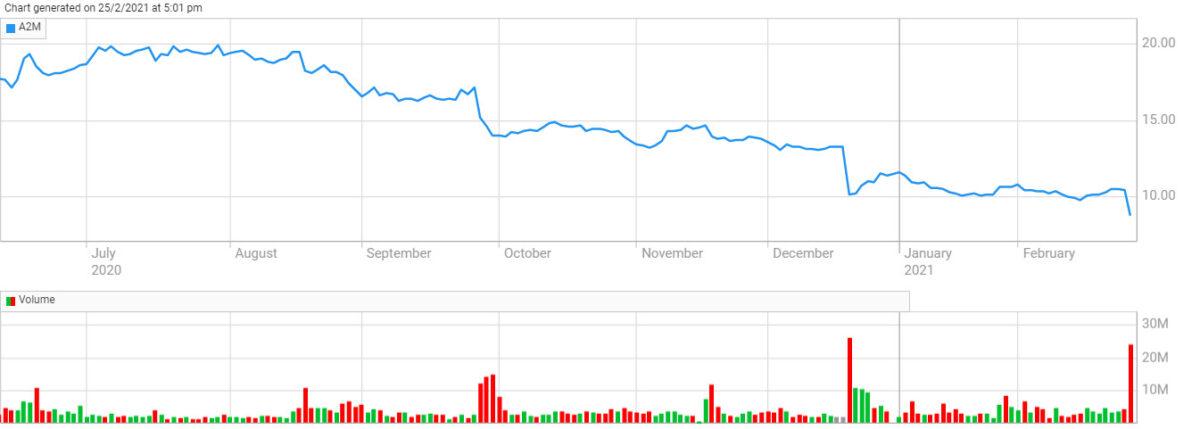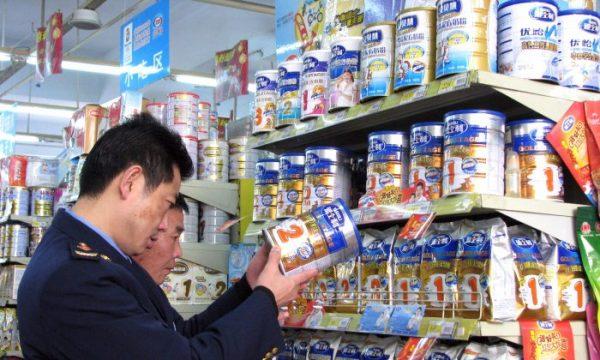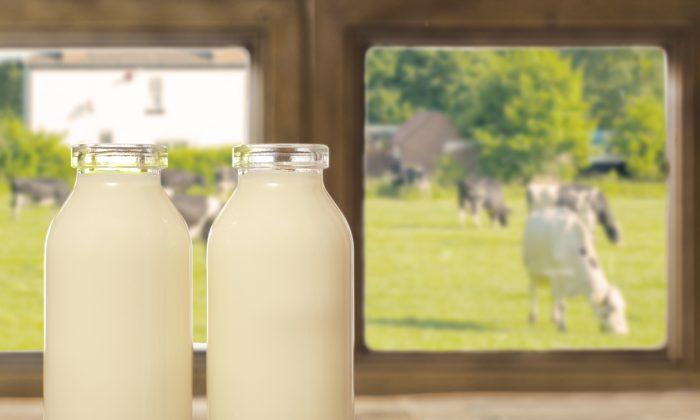A2 Milk shares have plummeted to a two-year low after the company revealed a large fall in profit caused by COVID-19 restrictions.
After the report was released, A2 share prices dropped sharply by over 15 percent to A$8.80 just after midday. A2 Milk’s share price has more than halved since it hit its peak of A$19.94 in mid-2020.

But he noted that COVID-19 had caused a lot of supply and demand volatility. “We are working our way through that,” Bortolussi said.
However, the report revealed the loss in revenue is mainly attributed to challenges with its daigou channel, which A2 has remained committed to despite its ambiguous distribution.
“Daigou” refers to personal shoppers who purchase commodities from overseas, such as milk and baby formula, and resell it back in China.
Companies don’t have control over where products go when sold through daigou, making the logistics difficult to manage.

Despite the problems, A2 has no plans to steer away from daigou and focus on other mainstream e-commerce distribution channels.
“The company continues to focus on re-activating the daigou/reseller channel and is confident that it remains an attractive and strategically important channel for distribution penetration and new user recruitment,” the report writes.
Bortolussi believes the fourth quarter will do much better than the third after supporting their daigou sellers. He said they would have to innovate and adapt to the situation to not be as reliant on Chinese tourism and international students returning to Australia.
A2’s business in China continues to grow as it saw a 45.2 percent increase in infant nutrition sales. However, this rise is dwarfed by the loss brought about by daigou challenges.
While Bortolussi said his top priority was focusing on the Chinese market, he also acknowledged the growth of domestic Australia brands, with liquid milk sales rising by 16.3 percent in Australia to $86.9 million.
A2 also achieved its highest ever market value share in Australia, reaching 11.7 percent of domestic consumption. The company believes that this was primarily driven by increased levels of in-home consumption during the lockdowns.





